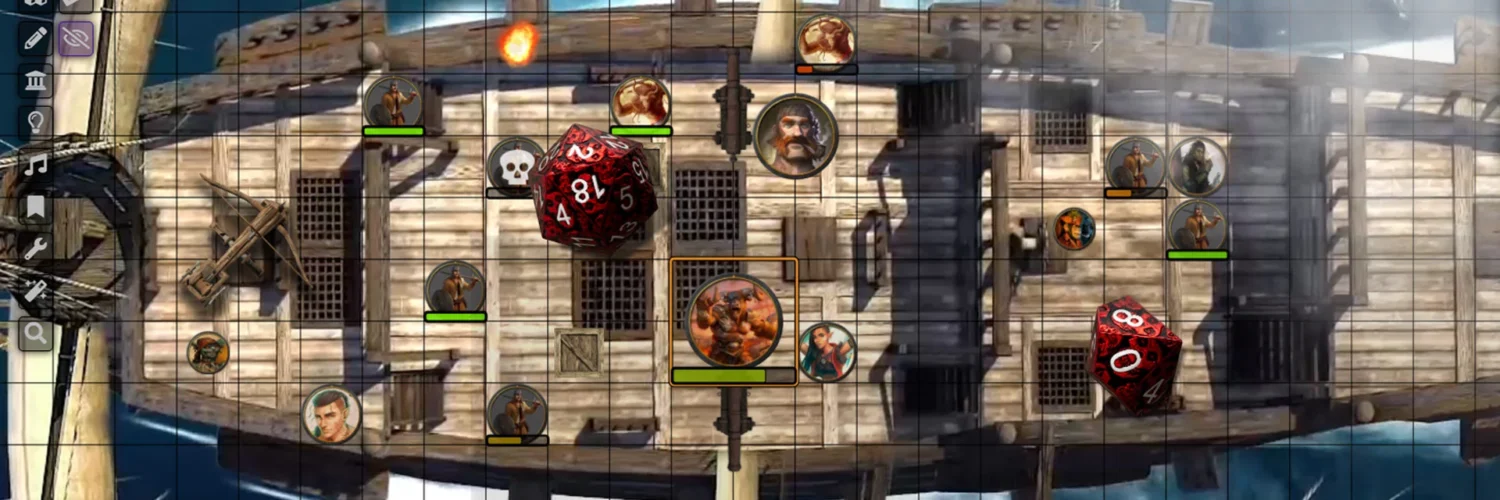If you’re an avid virtual tabletop gamer, you’re probably familiar with the benefits of using Forge VTT. Forge VTT is a powerful platform that provides a seamless and immersive role-playing experience for players and Game Masters alike. However, as with any virtual tabletop, creating captivating maps for your campaigns is essential. This is where Pymapper comes into play – a popular mapping tool with a user-friendly interface. In this article, we will explore whether it’s possible to import Pymapper into Forge VTT and how to do it effectively to enhance your gaming experience.
Understanding Pymapper and Forge VTT
Before we delve into the integration process, let’s take a closer look at Pymapper and Forge VTT.
Pymapper Overview Pymapper is a versatile and free mapping tool designed to help Game Masters create custom maps for their tabletop RPG campaigns. It provides a range of features like drawing tools, grid customization, and the ability to import custom images. Many tabletop enthusiasts find Pymapper an excellent choice for its simplicity and flexibility.
Forge VTT Overview Forge VTT, on the other hand, is a web-based virtual tabletop designed to streamline the gaming experience. It offers powerful features like dynamic lighting, fog of war, integrated character sheets, and an extensive collection of assets. Forge VTT aims to provide a user-friendly and visually immersive environment for players to explore.
The Advantages of Integrating Pymapper with Forge VTT
Combining the strengths of both Pymapper and Forge VTT can significantly enhance your RPG sessions. Here are some advantages of this integration:
1. Creative Map Design Pymapper enables you to create intricate and detailed maps, offering an unparalleled level of customization. By importing these well-crafted maps into Forge VTT, you can elevate your game’s aesthetics and make exploration more engaging for your players.
2. Seamless Import Process Importing Pymapper maps into Forge VTT is relatively straightforward, making it accessible to both novice and experienced Game Masters. With just a few steps, you can have your custom maps ready for action in your virtual tabletop sessions.
3. Time Efficiency By utilizing Pymapper’s efficient mapping tools and then importing them into Forge VTT, you can save precious preparation time for your campaigns. Spend more time on storytelling and game mechanics, knowing that your maps are visually impressive and seamlessly integrated into your virtual tabletop.
Steps to Import Pymapper into Forge VTT
Now, let’s walk through the steps to import Pymapper maps into Forge VTT:
Step 1: Create Your Map in Pymapper Start by designing your map in Pymapper. Use the various drawing tools to bring your imagination to life. You can craft anything from sprawling dungeons to lush forests or futuristic cityscapes.
Step 2: Export Your Map as an Image File Once your map is ready, export it as an image file (JPEG or PNG format) from Pymapper. Ensure that you save it to a location on your computer for easy access during the import process.
Step 3: Launch Forge VTT Log in to your Forge VTT account and open your desired campaign.
Step 4: Access the Scene Manager In the Forge VTT interface, locate and access the Scene Manager. This is where you can import and manage your maps.
Step 5: Import Your Pymapper Map Within the Scene Manager, find the option to import a new scene or map. Browse your computer for the image file you exported from Pymapper and select it. Forge VTT will then import the map into your scene.
Step 6: Adjust Grid and Tokens (If Applicable) Once the map is imported, you may need to adjust the grid settings in Forge VTT to align with the one you used in Pymapper. Additionally, you can add tokens, labels, and other interactive elements to the map within Forge VTT.
Tips for a Smooth Integration
To ensure a seamless integration of Pymapper maps into Forge VTT, consider the following tips:
1. Consistent Grid Settings Maintain consistent grid settings between Pymapper and Forge VTT to avoid misalignments when importing the map.
2. Optimize Image Resolution Export your Pymapper map with an appropriate resolution to maintain its visual quality when imported into Forge VTT.
3. Token Placement If you use tokens or miniatures on your maps, make sure to place them accurately in Forge VTT to match their original positions in Pymapper.
Conclusion
In conclusion, integrating Pymapper with Forge VTT is not only possible but also highly beneficial for enhancing your virtual tabletop gaming experience. By creating captivating custom maps with Pymapper and seamlessly importing them into Forge VTT, you can immerse your players in visually stunning and engaging RPG sessions. Embrace this powerful combination of tools to unlock a new level of creativity and excitement in your tabletop campaigns.










